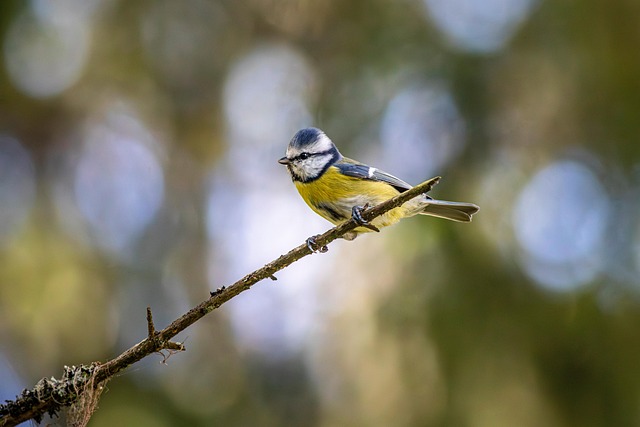I never realized how many amazing birds nearby were waiting to be noticed. In my city park, American Robins strut with their rusty breasts, singing at dawn like they own the place. In my suburban yard, I’ve spotted Yellow-Rumped Warblers during migration, their golden patches glowing in the sun. Even at night, the eerie trill of an Eastern Screech-Owl sends shivers down my spine from a nearby oak.
What blew my mind? These birds are everywhere—urban rooftops, coastal marshes, even vacant lots. I started noticing how planting native shrubs like elderberry draws in American Goldfinches, their sunny feathers brightening my day.
Migration seasons are a goldmine: spring brings Scarlet Tanagers, fall delivers soaring Red-Tailed Hawks. I learned to watch for subtle signs—louder chirps, flocking patterns—to catch these travelers. It’s like a secret world opened up right where I live.
Why I Missed These Birds for So Long
I’ll be honest: I was too distracted to notice amazing birds nearby. My phone’s endless notifications drowned out the Black-Capped Chickadee’s cheerful “fee-bee.” Science calls this “inattentional blindness”—when you’re so focused, you miss what’s right in front of you, like a Cedar Waxwing gobbling berries.
I also felt intimidated, thinking I needed to know every species. But starting simple—learning the Ruby-Crowned Kinglet’s white eye-ring—built my confidence.
Life’s hustle didn’t help. I thought birdwatching was for retirees, not me. But then I read how just 10 minutes of birdwatching lowers stress hormones, per Cornell’s studies. Now, I sip coffee with binoculars, feeling calmer than ever. It’s not just relaxing—it’s a way to reconnect with nature’s pulse, proving I was missing out big time.
My Go-To Tools for Birdwatching
I’ve found some game-changers for spotting amazing birds nearby. A pair of Nikon Monarch 8×42 binoculars brings distant Ospreys into focus without weighing me down. The Sibley Guide to Birds is my bible, with vivid illustrations of local species like the Downy Woodpecker.
Apps are a lifesaver: Merlin Bird ID nails species from a quick photo or chirp—last week, it identified a Carolina Wren’s teakettle song in seconds. eBird’s hotspot maps point me to prime spots, like a nearby wetland buzzing with Great Blue Herons.
For kicks, I set up a smart feeder with a camera, catching sneaky Barred Owls at night. I wear muted clothes to blend in and jot notes in a journal—date, behavior, weather—to track my finds. Joining an Audubon group was a game-changer; their tips helped me spot a Prothonotary Warbler in a swampy corner. These tools make birdwatching feel like a treasure hunt.
Where and When to Find These Feathered Stars
I’ve learned the best spots for amazing birds nearby are closer than you’d think. City parks are goldmines—think Peregrine Falcons nesting on skyscrapers. My local river trail teems with Belted Kingfishers diving for fish. Spring is electric with returning warblers; summer shows off Blue Jays hoarding acorns. Fall skies hum with migrating raptors, and winter feeders draw Dark-Eyed Juncos like magnets.
I hit up hidden gems, too: an overgrown lot near me hosts Indigo Buntings, their blue rivaling the sky. Dawn’s my favorite time—birds are loud and active, from Mockingbirds mimicking to Hermit Thrushes fluting. Using Google Earth, I map trails and plan outings, turning walks into adventures.
Why Birdwatching Feels So Good
Chasing amazing birds nearby has changed me. The gentle hikes keep me fit, and focusing on a Red-Winged Blackbird’s call sharpens my mind. Studies say birdwatching mimics meditation, cutting anxiety—I feel it when a Baltimore Oriole’s song washes over me. It’s also a wake-up call: noticing fewer Eastern Meadowlarks pushed me to plant native flowers, helping birds and bees alike.
Birdwatching connects me to something bigger. Logging sightings on eBird feels like contributing to science. Local bird festivals, like the Biggest Week, fund conservation while uniting enthusiasts. My backyard’s now a haven with sunflowers for cardinals, and I’m hooked on giving back to nature.
Leveling Up My Birdwatching Game
I’ve picked up tricks to go deeper. “Pishing”—soft “psh-psh” sounds—lures curious White-Throated Sparrows closer. Watching flight patterns helps me ID hawks; Broad-Winged Hawks spiral in flocks during migration. My DSLR with a 300mm lens captures Ruby-Throated Hummingbirds mid-hover, but I’m careful—no flash, no stress. Recording calls with Raven Lite lets me compare spectrograms, nailing tricky IDs like House Wrens.
I keep a life list, celebrating firsts like spotting a Cerulean Warbler. Local clubs and online forums like r/birding keep me inspired, sharing photos and rare finds. It’s a thrill that keeps growing.
Overcoming Birdwatching Hurdles
I hit roadblocks, but solutions keep me going. Rainy days? I grab waterproof gear and check weather apps for clear windows. Confused by similar species? Cross-checking Merlin and Sibley sorts it out. City noise? I focus on visuals or hit quieter trails. Budget tight? Free apps and library guides work fine. For accessibility, I’ve seen monoculars help one-handed users, and audio guides open doors for the visually impaired.
Joining the Birding Tribe
I found my people in birding communities. Local Audubon walks introduced me to experts who pointed out elusive warblers. Online groups on Reddit buzz with tips and IDs.
Events like World Migratory Bird Day connect me to global efforts. I’ve even taken kids birdwatching—spotting a Common Yellowthroat teaches them ecology better than any textbook.
This journey’s shown me amazing birds nearby are more than wildlife—they’re a path to joy, health, and connection. Grab binoculars, step outside, and let these feathered wonders surprise you. You’ll wonder how you ever missed them.
